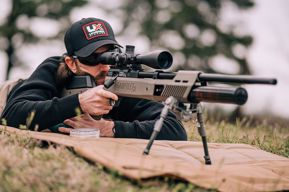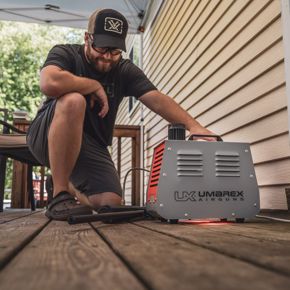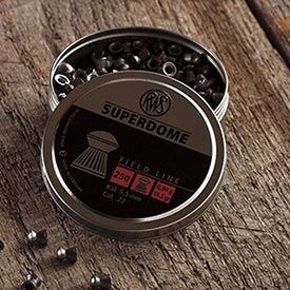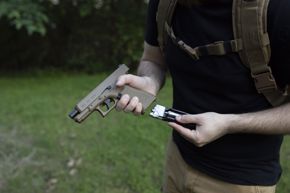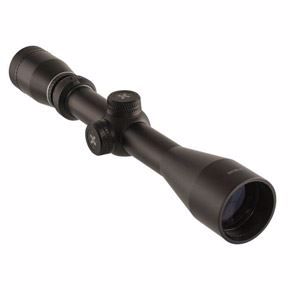Hitting what you are aiming at is a chief concern with any shooting device. Close only counts in horseshoes and hand grenades—ok that is a slight exaggeration, but you get the point. Rifle accuracy is something that really matters. You do need to understand that the biggest factor in accuracy is the dummy behind the trigger, but there are some simple steps you can take to make sure your air rifle is in tip-top shape for hunting or knocking the X-ring out of a target.
Spring Air Rifle Stock Screws
For you spring rifle shooters, like RWS, Ruger, or Umarex rifles, the first thing you want to make sure to check out are the stock screws. These screws loosen as the gun is shot and can cause a few problems. On the minor side of the scale, poor accuracy will result with loose screws. On the major side of the scale, a broken stock is the natural result of loose or missing stock screws. The screws loosening are the perfectly natural reactions to the cocking force and vibration that is generated when using the pellet rifle. Therefore, as the owner of a springer (coiled spring or gas piston) you need to make sure the stock screws are snug when you go out to shoot. Make sure you know where the right sized screwdriver, bit, or key is and snug down the screws accordingly.
What you don’t want to do is over-tighten. Naturally over-tightening can lead to stripped heads, broken screws and, most notably, poor accuracy. Too many ugga-duggas causes many problems. Also on the avoid-this list is using thread locking compound on those screws. Thread locking liquids can lead to a negative effect on accuracy and lead to stripped heads on the screws should the locking effect be more than desired. The correct torque figure is usually around 20 in-lbs. for the forearm screws and 25-30 in-lbs. on the trigger guard stock screw.
Clean Living
Yes, clean living is good living. A life spent in filth and squalor is a life that will lead to disappointment and premature failure. This is true in every area of your life. Keep your house clean and it retains value and is a joy to live in. Keep your car engine clean and it will run better, run longer, and save you money in the long run. Getting the best out of your air rifle comes down to some simple principles like keeping the stock screws tight and keeping the action clean and properly maintained will do the same for your air rifle.
What you don’t want to do is go buy a generic gun cleaning kit and go hog wild cleaning your air rifle with those tools. Airguns are not made like firearms. The steel is softer and the mechanics of the airgun are not conducive to the oils found in the standard firearm cleaning kit. RWS to the rescue! RWS .177 and .22 caliber cleaning kits are top shelf units that have everything you need in one package to keep your air rifle clean and well lubed.
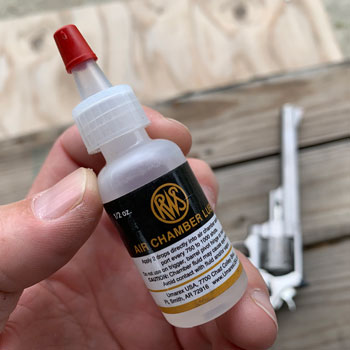 Airgun cleaning brushes for air rifles are best made from nylon. Why? We are only dealing with soft lead or soft alloy fouling. There won’t be any hot powder fouling or copper fouling that requires lots of scrubbing with a metal wire bristle brush found in an air rifle barrel. What is needed is some standard cleaning solvent on a nylon bristle brush. Once scrubbed, mop out ALL the residue with dry patches or RWS cleaning pellets. This is an important step as any solvent left in the barrel can cause the rifle to “diesel” once you load it up and shoot it later.
Airgun cleaning brushes for air rifles are best made from nylon. Why? We are only dealing with soft lead or soft alloy fouling. There won’t be any hot powder fouling or copper fouling that requires lots of scrubbing with a metal wire bristle brush found in an air rifle barrel. What is needed is some standard cleaning solvent on a nylon bristle brush. Once scrubbed, mop out ALL the residue with dry patches or RWS cleaning pellets. This is an important step as any solvent left in the barrel can cause the rifle to “diesel” once you load it up and shoot it later.
If your air rifle has some sort of sound suppression device permanently installed on it, such as the Umarex SilencAir, special care must be employed when cleaning the rifle in order to not disturb the baffles inside the device. With these suppressed rifles, don’t use cleaning pellets or the push through style patches. These can fall into the muzzle device and create an obstruction.
For the outside of the rifle, using a traditional oil is good. This protects the finish and helps prevent rust. HOWEVER, do not use a petroleum based oil on the internal components. RWS Chamber Lube is the only thing that needs to go on the piston seal and o-rings. It’s that simple—no petroleum where the air is being compressed. Chamber Lube is included with both of the RWS cleaning kits that are mentioned above.
Use the Right Airgun Ammo
This cannot be understated: Pellet rifles can be ammo finicky just like powder burning rifles. Actually, they tend to be much worse than centerfire rifles where even two identical rifles will shoot the same pellet differently.
As a consumer, don’t get all bent out of shape if a particular pellet doesn’t work well in your air rifle. I know I don’t like to waste money on something that doesn’t work, but hunting for the pellet that works best for my gun comes with the territory. In the event you have airgun pellets that don’t work in your rifle, consider giving them to another shooter who uses the same caliber. Their gun may love that particular pellet.
Once you do find a pellet that works really well, buy several tins and store them away. Some pellets work best in certain velocity ranges. Ideally you will find a pellet that is accurate and makes plenty of power. Overall velocity is not the most important factor in pellet selection. Often the lighter pellets don’t make the best power or offer the best accuracy. Start with a focus on the boring middle (8-10 grains in .177, 14-17 grains in .22, and 25-30 grains in .25) and if you don’t have a chronograph to figure velocity, just focus on accuracy. Accuracy seldom disappoints. RWS does have a .177 caliber pellet sampler pack and we carry the RWS line of .22 caliber pellets to help get your pellet testing started.
Tuning Up Your Pellet Rifle
While these simple steps are not heavy duty tuning, they are things any shooter should be doing to maximize your airgun’s accuracy without any undue effort. Now there are some internal tuning methods that can be done to really slick a rifle up, but those tips are more rifle specific and best addressed with an airgun tuner that is familiar with your specific platform. This is especially important if you have a springer as special tools and skills are needed to disassemble those air rifles. A good place to start if you want to get into custom mods and tunes is a Facebook owners groups for the air rifle model you own.
Mark Davis, avid outdoorsman, family man, and outdoors writer, is the social media specialist for Umarex USA.


